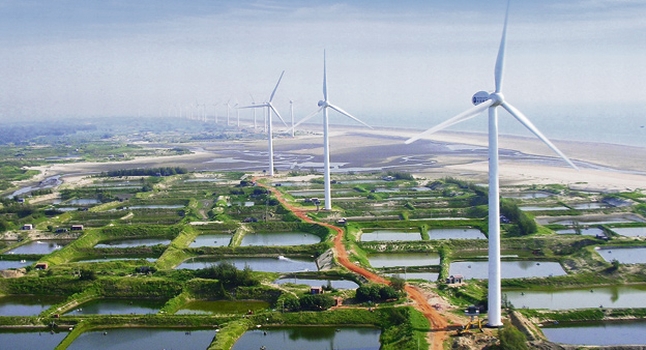Bloomberg predicts that operations and maintenance work on China’s huge and growing fleet of wind farms is on course to be a $3 billion/year market by 2022
China is the world’s largest wind market with more than 100 GW of wind capacity, equivalent to about 65,000 turbines, and is currently adding more than 30 new turbines per day. Operating and maintaining these turbines costs $500 million per year, but this will increase to $3 billion per year by 2022, according to research just published by Bloomberg New Energy Finance, an analysis company. In total, it found that $16bn will be spent to operate and maintain China’s wind turbines from 2015 to 2022.

To meet the growing demand for outsourced O&M services, more than 90 independent wind farm service providers already operating in China. However, service quality and technical expertise vary significantly between them.
The task of providing O&M for the estimated 250 GW of wind capacity that China is forecast to have in 2022 (several times that in any other country) will be a major challenge, creating business opportunities not just for turbine manufacturers but for specialist service providers and other players. It will also create many tens of thousands of jobs.
Justin Wu, head of Asia research for Bloomberg New Energy Finance, said: “This market has not attracted much attention up till now, partly because China’s wind capacity only started to grow at world-leading rates late in the last decade and partly because many of the turbines that have been installed have been working through extended warranty periods. But the next few years will see the birth of a multibillion-dollar O&M business.”
Around the world, turbine manufacturers typically offer 2 to 3 year warranties on their turbines, after which the wind farm owner must find a new way to run their turbines, either through “self-servicing” them using in-house employees, or by outsourcing to a third-party service provider. But in China, standard warranty periods have been extended, sometimes for years, due to quality concerns about Chinese-made turbines.
In 2014, more than two-thirds of all wind turbines operating in China were still under their original manufacturer warranties. However, Bloomberg New Energy Finance expects the number of turbines coming out of warranty in China to grow dramatically in the coming years, as quality improves and turbines age. It forecasts that 14 to 18 GW of wind capacity to come out of warranty annually in 2014 to 2016, and 26 GW and 30 GW per annum in 2017 and 2018, respectively. By 2022, a total of 187 GW of wind turbines in China will be out of manufacturers’ warranty.
So far, most Chinese owners (75%) have chosen to self-maintain turbines after the end of warranty periods. This compares to an equivalent figure of just 10% in Europe at the moment. This is likely to change over the coming years, as owners’ assets under management grow. In-house O&M management will eventually become unwieldy so large owners will seek to mitigate operational risk through outsourcing. In five years’ time, Bloomberg New Energy Finance expects in-house maintenance to fall to 50% of the total warranty-expired fleet.
To meet this growing demand for outsourced O&M services are more than 90 independent wind farm service providers already operating in China. However, service quality and technical expertise vary significantly between these service providers; more than two thirds did not exist two years ago and many with poor expertise and a lack of strong financial backing are likely to exit the market.
Bloomberg New Energy Finance has conducted the very first wind O&M survey of nearly two dozen market participants in China. Other key findings include:
- A lack of industry standards and regulations, a lack of experienced independent service providers, and a lack of trained technicians are cited as the top three challenges for the industry.
- Cost, quality of service, and an existing relationship with the vendor are the most important criteria for selecting a service provider.
- Blade maintenance is seen as the biggest O&M opportunity, followed by maintenance planning tools and condition monitoring systems.
Finally, 77% of wind turbine manufacturers and 80% of independent service providers expect wind farm owners to continue to dominate China’s O&M market, even though outsourcing will grow as turbines leave warranty. Ironically, wind farm owners are less optimistic about their own capabilities, with only 64% believing they will keep maintaining their own assets while the rest believe this will be outsourced.
Filed Under: News, O&M




